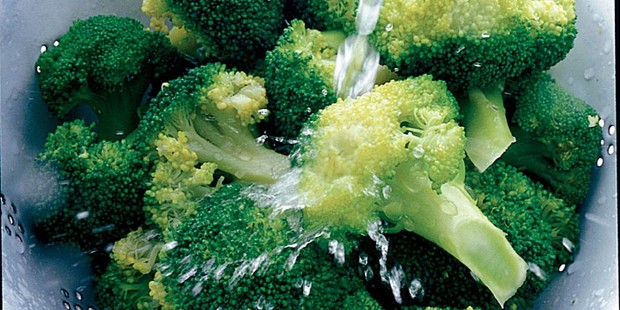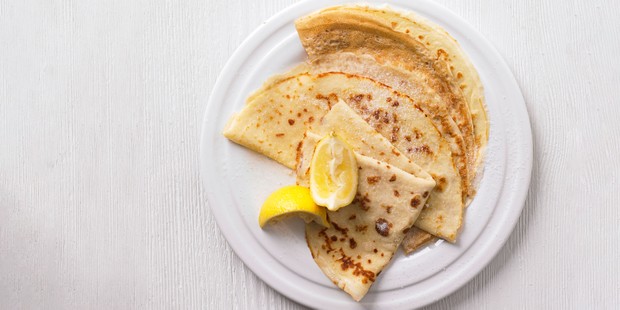It’s fair to say we’re a nation of tea and coffee lovers. According to the Tea and Infusions Association, we drink approximately 100 million cups of tea, and an estimated 70 million cups of coffee, a day. This, plus flicking on the kettle ready to fill saucepans for ingredients like pasta, noodles, beans and grains, means we give our kettles a real workout everyday.
Over time, limescale (insoluble calcium carbonate) will begin to form inside the kettle. It can corrode your kettle over time, meaning it’ll have a shorter lifespan, so we’re here to help you learn how to descale a kettle.
In a bid to help people buy less and understand how to care for their appliances properly, we’ve put together this handy guide to help you descale a kettle. We tried out three methods: bicarbonate of soda and water, distilled white vinegar and water, and an eco-proprietary kettle descaler.
What is limescale?
Limescale is the insoluble calcium and magnesium deposits that are left behind when hard water evaporates. Slightly off-white in colour, in kettles it forms when water is heated or left standing. In short, in hard water areas, limescale is inevitable. While there’s no way to stop limescale build-up altogether, there are steps you can take to slow the formation down. Familiarise yourself with the water hardness level in your area. Our handy guide maps water hardness across the UK.

As well as cleaning your kettle regularly, we advise keeping it dry when not in use. You can do this by only boiling the amount of water you need, so no water is left standing in the kettle. If your kettle has a flip lid, leave this open after use to allow any lingering water to evaporate after the kettle has boiled.
Why should you descale your kettle?
While it’s not harmful to ingest, limescale is unappealing. It can give your water a slightly metallic flavour and manifest itself as flakes in drinks. No one wants to be picking bits out of their tea or coffee.
It can also be harmful to your kettle long-term. Limescale build up can affect the efficiency of your kettle, meaning it takes longer to boil, which could affect its lifespan in turn.
Most kettles have a flat panel that covers the kettle’s heating element, but if your model doesn’t, limescale can cause it to become less efficient and even burn out.
We recommend descaling your kettle every few months, or more frequently if you’re seeing significant build up that’s affecting your kettle’s performance. The methods below can be used for everything from maintenance to large, more thorough cleans.
How to descale a kettle
We tested three descaling methods on kettles that were in need of some TLC: bicarbonate of soda and water, distilled white vinegar and water, and an eco proprietary kettle descaler.
For all methods, the following steps were followed before the descaling began.
- Remove as much of the free-floating limescale as you can
- Remove the filter in the spout, then fill the kettle around ¼ full with water and swirl
- Pour the water out and repeat, removing as much of the solid limescale as possible
- Rinse the filter under a running tap to remove any limescale on there, then fit it back into the kettle
Bicarbonate of soda and water method
Method:
- Fill the kettle ¾ of the way with water and add a heaped tablespoon of bicarbonate of soda
- Boil the kettle
- Allow the kettle to sit for an hour
- Pour out the water and rinse
- Fill the kettle with water again and boil to remove any lingering bicarbonate of soda flavour

We didn’t notice a huge amount of limescale removal using this cheap and cheerful method. We were able to loosen a small amount of limescale, but on a kettle with this much build up, something stronger is needed. We’d recommend this method as a maintenance step between larger cleans or if you’re in an absolute pinch and don’t have the kit for either of the following methods.
Distilled white vinegar and water method
Method:
- Fill your kettle half with distilled white vinegar and half with water
- Boil the kettle
- Pour all of the water out
- Fill your kettle with water again and boil to remove any lingering vinegar. Repeat this step as necessary.

Be sure to open a window or put on your extractor fan, as this method produces a steamy, vinegary fug. This is a cheap, if slightly pungent method of quickly descaling your kettle. It proved very effective and doesn’t require much time investment and is free of harmful chemicals.
The kettle didn’t return to ‘like new’ appearance but all hard limescale was removed. We boiled a total of four times.
One downside we found was that it’s a bit tricky to remove scale from the kettle spout. Neat vinegar can also be an irritant to sensitive skin so it would be worth wearing rubber gloves when trying to tackle this area.
Kettle descaler: Ecozone Kettle & Iron Descaler
There are lots of kettle descalers on the market, but we chose this option from British brand, Ecozone, for it’s eco credentials and its wealth of accreditations from Allergy UK, Cruelty Free International and the Vegan Society.
It’s made from 100% citric acid and we used one sachet to achieve our results.
This method takes just half an hour, so you’ll be back with a cuppa in your hand in no time.

The results speak for themselves. This method proved the most successful and left our previously neglected kettle looking almost brand new – check out that mirror shine on the base!
Available from:
Best kettles
If you’ve tried all our descaling methods and your kettle really has given up the ghost, it’s time for a new one. We tested a range of models, from the traditional and budget friendly, to high-tech app controlled ones. Here are three that made it into our best kettles list.
KitchenAid Artisan 1.5 litre variable temperature kettle – Star Buy

Star rating: 5/5
Best overall kettle
This eye-catching kettle allows you to choose the temperature you want between 50-100C. It’s comfortable to use and comes in a range of attractive colours.
Read our full KitchenAid Artisan kettle review
Available from:
Bosch cordless kettle – Star Buy

Star rating: 5/5
Best value cordless kettle
This sleek cordless kettle is quick to boil and, like the KitchenAid above, has a range of temperature settings (70-100C). This model also comes with a limescale filter.
Read our full Bosch cordless kettle review
Available from:
Tefal Loft kettle

Star rating: 4.5/5
Best classic kettle
If you’re looking for a budget-friendly option, this Tefal model has a wide, easy-fill opening. It was fast when boiling and like the Bosch, has a removable limescale filter.
Read our full Tefal Loft kettle review
Available from:
More articles on cleaning and kitchen safety
How to keep your kitchen clean
10 ways to deep clean your kitchen
What to keep where in the kitchen
How to store food safely
Everything you need to know about food poisoning
How to reheat leftovers
Top tips on freezing food
More small appliance reviews
Best kettles
Best espresso coffee machines
Best bean to cup coffee machines
Best pod coffee machines
Best pan sets
Best cafetieres
If you have any questions, suggestions for future reviews or spot anything that has changed in price or availability please get in touch at goodfoodwebsite@immediate.co.uk.







